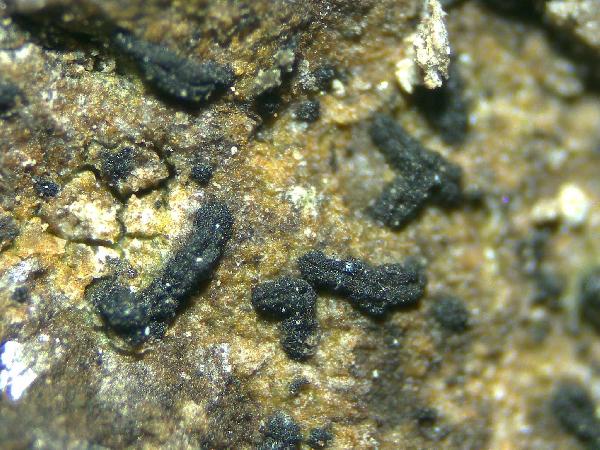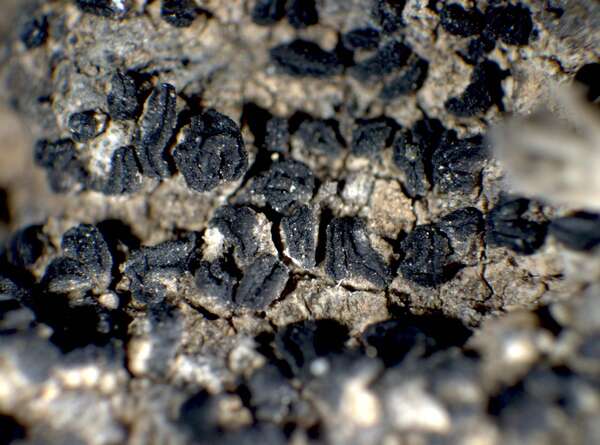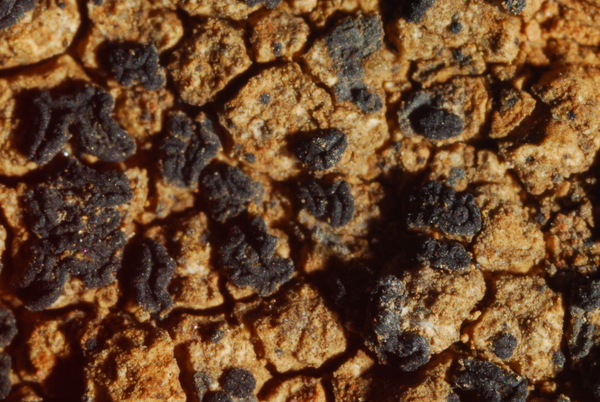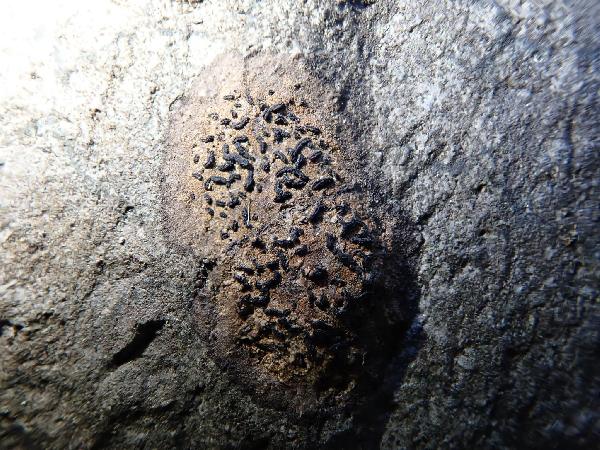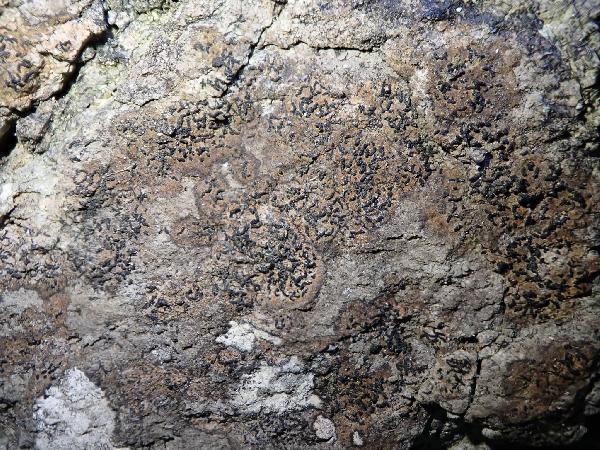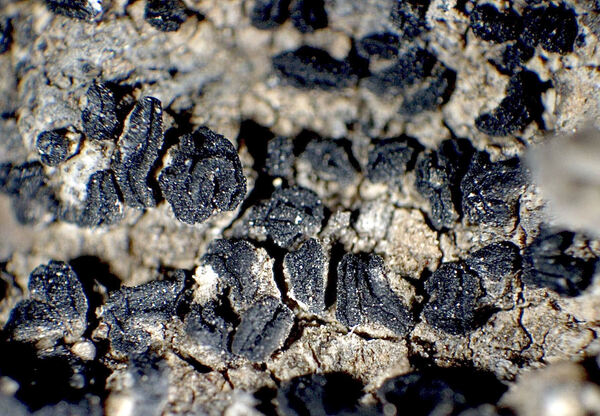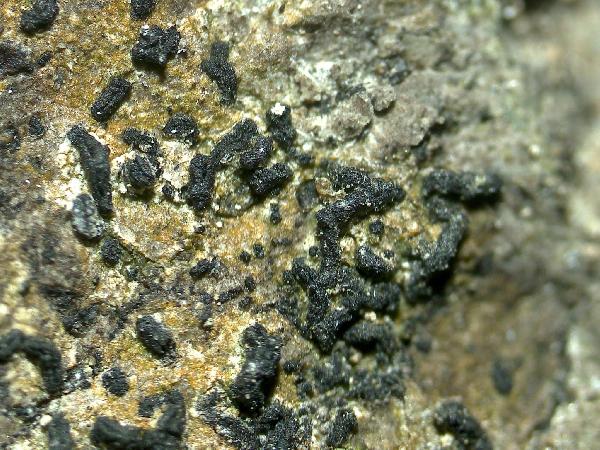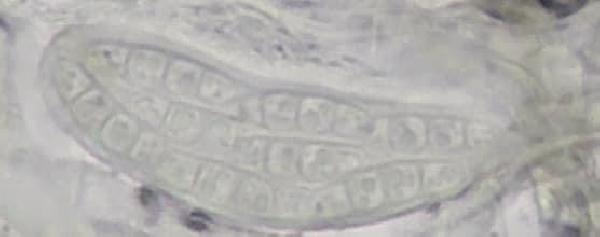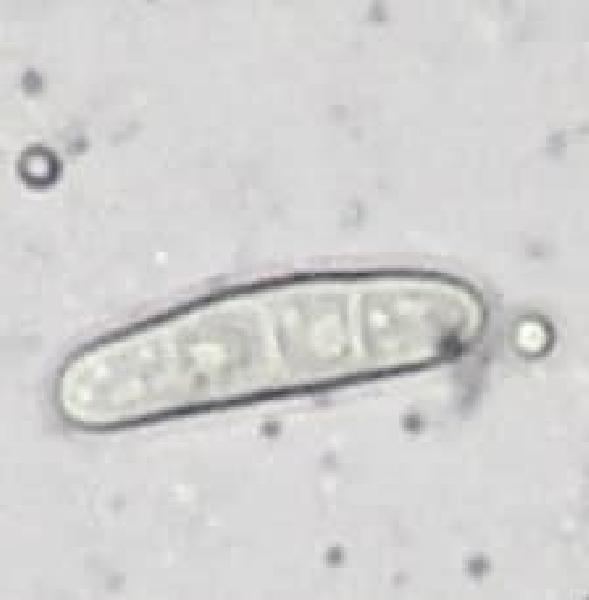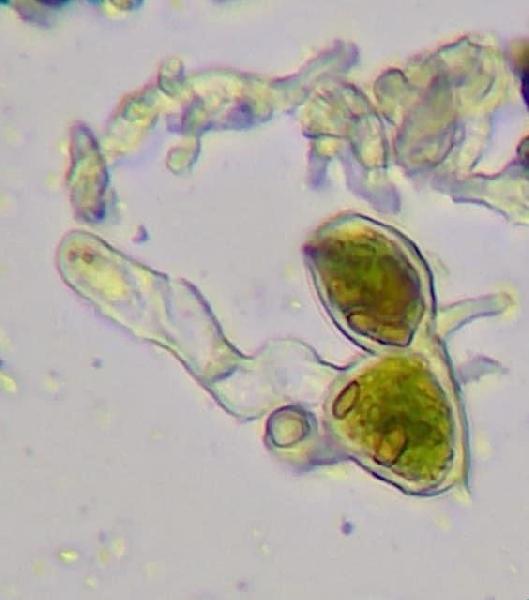Alyxoria lutulenta (Nyl.) Sipman & Raus
Flora of Amorgos: 136, 2019.. Basionym: Opegrapha lutulenta Nyl. - Mém. Soc. Sc. Nat. Cherbourg, 3: 201, 1855.
Synonyms:
Distribution: N - Lig (Watson 2014). C - Tosc, Sar. S - Si (Ottonello & Puntillo 2009).
Description: Thallus crustose, episubstratic, rather thick, smooth to granulose, yellowish grey to grey, extended and rimose-areolate, but sometimes reduced to a rim surrounding the apothecia. Apothecia lirelliform, black, 0.4-1 x 0.4-0.4 mm, often confluent in rounded to star-shaped clusters, semi-immersed to sessile, with a slit-like disc and a thick proper margin. Proper exciple carbonized, extending below the hymenium; epithecium brownish, 25-30 μm high; hymenium colourless, 85-150 μm high, I+ blue; paraphysoids 2-2.5 μm thick, the apical cells not swollen; subhymenium reddish brown, 25-55 μm high. Asci 8-spored, elongate, cylindrical or elongate-ellipsoid, the inner layer of endoascus amyloid in upper part, with a ring visible around a small ocular chamber, Varia-type. Ascospores 3-septate, hyaline (often turning brownish when overmature), ellipsoid, (15-)17-22 x 5-7 μm, with a thick gelatinous perispore, the wall narrow, uniform or only slightly thickened at septa. Pycnidia black, immersed. Conidia bacilliform, straight, 5-8 x 0.8-1 μm. Photobiont trentepohlioid. Spot tests: K, C-, KC-, P-, UV-. Chemistry: without lichen substances.Note: on steeply inclined surfaces of basic siliceous rocks, often with Dirina and Roccella; restricted to Tyrrhenian Italy.
Growth form: Crustose
Substrata: rocks
Photobiont: Trentepohlia
Reproductive strategy: mainly sexual
Most common in areas with a humid-warm climate (e.g. most of Tyrrenian Italy)
Taxon bound to maritime-coastal situations
Commonnes-rarity: (info)
Alpine belt: absent
Subalpine belt: absent
Oromediterranean belt: absent
Montane belt: absent
Submediterranean belt: absent
Padanian area: absent
Humid submediterranean belt: absent
Humid mediterranean belt: rare
Dry mediterranean belt: extremely rare
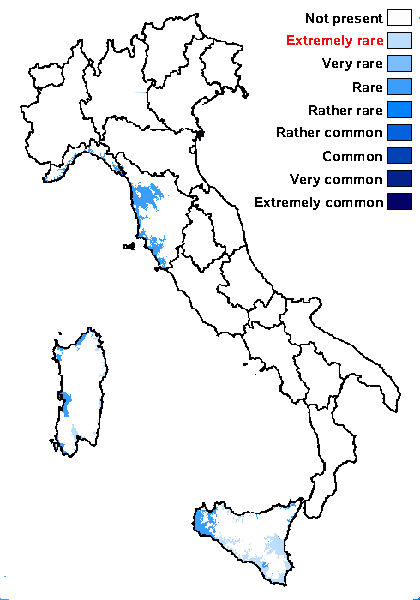
Predictive model
Herbarium samples
Growth form: Crustose
Substrata: rocks
Photobiont: Trentepohlia
Reproductive strategy: mainly sexual
Most common in areas with a humid-warm climate (e.g. most of Tyrrenian Italy)
Taxon bound to maritime-coastal situations
Commonnes-rarity: (info)
Alpine belt: absent
Subalpine belt: absent
Oromediterranean belt: absent
Montane belt: absent
Submediterranean belt: absent
Padanian area: absent
Humid submediterranean belt: absent
Humid mediterranean belt: rare
Dry mediterranean belt: extremely rare

Predictive model
| Herbarium samples |
